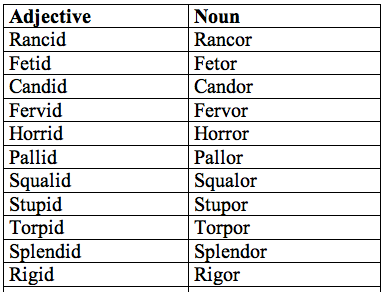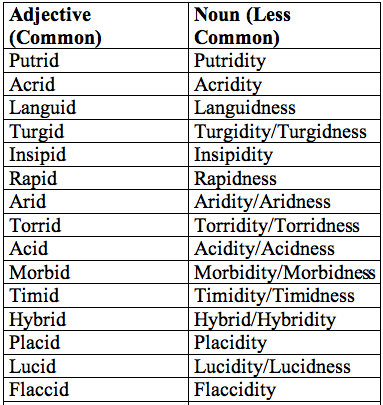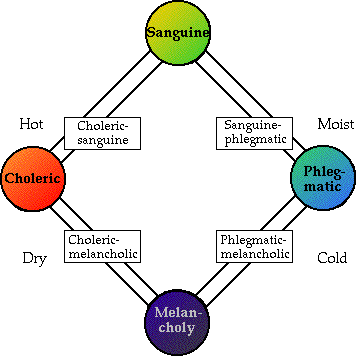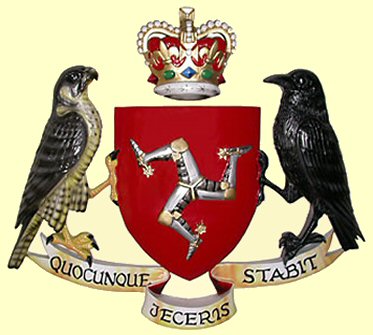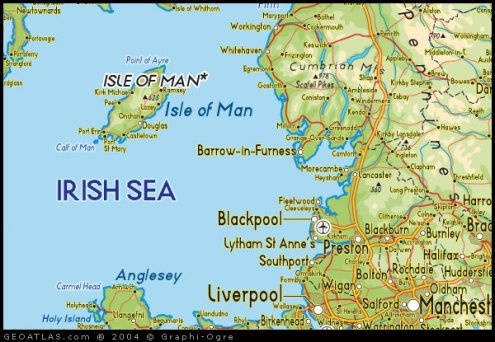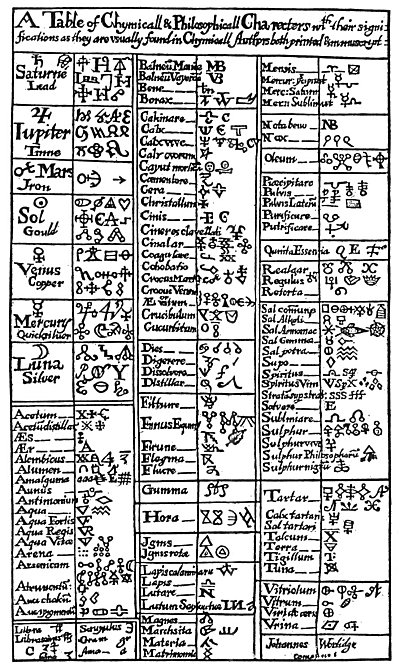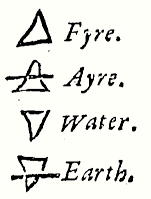Project Habakkuk or Habbakuk
A joint effort between British, American, and Canadian forces during the final years of World War Two, Project Habakkuk endeavored to create a floating aircraft carrier made of frozen water and wood pulp, inspired by the idea of a military base built atop a floating glacier. The project failed miserably but produced some fascinating anecdotes, including one incident in which a bullet shot at a block of Pykrete (the name given to the frozen water and pulp concoction) in order to demonstrate the material’s strength ricocheted around a room containing, among other notables, Winston Churchill and Franklin D. Roosevelt. As tempted as I am to write my own take on this intriguing and at times humorous subject, I must admit that the Wikipedia entry on Project Habakkuk is more comprehensive and well cited than any I could produce.
Here is a direct link to the Wikipedia entry.
The strange story of Project Habakkuk excites me because it combines grandiose and radically novel ideas, the impassioned efforts of highly capable individuals, the titillating drama of the wartime urgency for the advancing of naval and military technology, the involvement of conscientious objectors, as well as setbacks and failures that are amusingly pitiful. Enjoy.
The Complex Relationship Between -id and -or
The English language, notorious for its pervasive irregularities and apparent inconsistencies, includes a trend that, when applied to certain word forms, leads to some curious results. The trend to which I refer is the relationship of adjectives ending in –id to corresponding nouns ending in –or. This trend is seen exclusively amongst words with Latin roots. Here is a table containing some examples of such adjectives:
It should be noted that stupor is not the exact noun form of stupid, which is actually stupidity. And, while stupidity and stupor convey different nuances, there is enough overlap in their definitions to make the noun-verb connection apparent. There are, however, just as many adjectives ending in –id with corresponding nouns that do not follow this trend. These nouns tend to end in the more common –idity and –ness. Here are some examples:
This second list acts as a reminder of just how irregular English conjugation is. A much more interesting list, however, includes adjectives ending in –id which, if run through the –id → –or conjugation mechanism, produce curious results. The following list includes the grammatically correct noun forms of these adjectives, as well as a list of nouns ending in –or which could possibly share some etymological relationship to the corresponding adjectives:

List 3: Adjectives with corresponding nouns that do not follow the -id --> -or pattern, but for which there exist other nouns, whether related to the initial adjectives or not, that do fall into the pattern
This is the list of most interest because, unlike the others, it does not merely consist of examples and counterexamples of the –id –> –or pattern. It presents us with an opportunity to explore the relationships between certain adjectives and the nouns that, coincidentally or not, are spelled and pronounced so as to fit the pattern established by the first list. Could the italicized nouns give us a glimpse into arcane uses of these adjectives? It requires no stretch of the imagination to see how the meaning of valid could be related to that of valor, the actions of a person possessing the Greek quality of valor being considered valid by the societal norms of the time. Similarly, it is easy to see how a relationship between liquid and liquor could exist somewhere in the recesses of word origins. But what of vapid → vapor and humid → humor?
While the word vapid is most commonly used as a synonym for insipid or lifeless, the Oxford English Dictionary reveals that, in the 17th century, vapid was used to mean, “Of a damp or steamy character; dank, vaporous.” Here, it seems, lies the –id → –or connection between vapid and vapor, an outdated relationship betrayed by the modern word forms in which it no doubt resulted. To unearth the connection between humid and humor also requires the pondering of a definition that has fallen out of use. The Oxford English Dictionary lists, among its definitions of humid, several relevant usages that haven’t been common for centuries. While the primary definition is, “Slightly wet as with steam, suspended vapor, or most; moist, damp.”, several historical uses of the word include, “In medieval physiology, said of elements, humours…Said of a chemical process in which liquid is used…Of diseases: Marked by a moist discharge.” This conception of humor (a reference to the Four Humours or Temperaments, medical notions that hearken back to ancient Egypt and Greece), here referring to wetness, gave rise to our modern notion of the word, currently used to mean, “Mood natural to one’s temperament…” and, “The faculty of perceiving what is ludicrous or amusing, or of expressing it in speech, writing, or other composition.” To uncover the relationship requires a look at classical medicine and its assumptions regarding the functioning of the human body.

A chart outlining the relationship of the four humours (blood, yellow bile, black bile, and phlegm) with the physical body and its personality traits
According to this conception of human health, one whose composition is characterized by moistness walks the line between sanguine and phlegmatic. Those with sanguine temperaments were ascribed the traits of extroversion and sociability, while phlegmatics were considered kind and relaxed. It does not require a far leap to bridge the gap between the ancient notion of physiological humidity and our contemporary use of the word humorous to suggest a jovial and comedic personality. The following image shows how moisture was associated with a sanguine-phlegmatic temperament:
Having deciphered the aforementioned relationships through a bit of etymological archaeology, it seems necessary to address one final list of words. Here is a list of common nouns ending in –or with corresponding adjectives that seem to follow no discernable pattern:

List 4: Nouns ending in -or with corresponding adjectives that do not follow the -id --> -or pattern
While this last list does not present any immediately obvious clues regarding outdated word usage, it leads to another interesting line of inquiry. Why is there no adjective form of temblor in the English language, whether modern or arcane? According to the Oxford English Dictionary, the world temblor, synonymous with earthquake, is an Americanism not seen in print earlier than 1876. Since the word is so young and is not commonly used, perhaps it simply never had the chance to sprout related adjectives. Perchance this could lead to the temblorous conclusion that English word forms only emerge if they are necessary, and do not merely arise out of grammatical convention.
Some Further Reading:
An article about Greek virtue ethics
A look at the classical conception of the four bodily humours
An exhaustive list of –id adjectives that makes special note of vapor and humor. Oddly, this list suggests that valor and valid are unrelated, while glossing over the relationship between humor and humid
Ned Maddrell, the Last Native Speaker of Manx
Situated in the Irish Sea between Ireland and England, the Isle of Man is, according to its government’s website, “An internally self-governing dependent territory of the Crown which is not part of the United Kingdom.” Inhabited since the 7th millennium BC, the island has hosted a variety of cultures practicing diverse traditions.
Although the island’s official language is currently English, the native tongue was, until recent decades, the peculiar Goidelic language of Manx Gaelic (insular Celtic languages are split into two groups: Manx, Irish, and Scottish Gaelic are dubbed Goidelic, while Breton, Cornish, and Welsh are dubbed Brythonic. The two groups are widely believed to share a common precursor) . This historically significant era came to an end on December 27, 1974 when Ned Maddrell, the last native speaker of Manx, died at the age of ninety-seven.
Fortunately for the sake of cultural preservation, Maddrell allowed linguists to record him speaking Manx in the late 1940s when he was one of only two living native speakers. Upon the 1962 death of the other native speaker, Sage Kinvig, Maddrell became something of a celebrity in linguistic circles. Students of Goidelic languages flocked to him in order to learn what they could of the imperiled language before his death. Maddrell’s willingness to expound upon Manx proved invaluable to its preservation, even if only for academic purposes. Here is an example of spoken Manx, available to us due in no small part to Maddrell:
To put the demise of Manx in context, here is part of a speech by the Office of the Spokesperson for the Secretary-General of the United Nations from February of 2009:
Some further reading:
An article that discusses the origins of Manx as well as its last native speakers
Some information about the Isle of Man from its government’s official website
A look at insular Celtic languages that distinguishes between Goidelic and Brythonic
An article with links to many different endangered languages
The Vesper Lynd
This history of mixology is riddled with dubious tales of origin, of outlandish claims made by notable barkeeps, of contradictory accounts. But one notorious cocktail (which, by the way, is technically illegal to serve in several American states due to the fact that it requires the mixing of two liquors in one beverage) about which much is known is the elusive Vesper Lynd.
As with any vintage cocktail, countless variations on this drink have been committed to text over the decades. But the original recipe, created at the Boodle’s gentlemen’s club in London in the early 1950s, is as follows:
2 ounces of Boodle’s gin (originally sold only at the exclusive club of the same name)
1 ounce of Russian vodka
½ ounce of Lillet blanc (an orange liqueur)
These ingredients are to be shaken over ice and strained into a chilled cocktail glass. The glass is then garnished with a lemon twist. The final product is exquisite in both flavor and appearance. The qualities of the cocktail itself, however, are eclipsed in interest by the story surrounding the drink’s popularity. One notable member of the Boodle’s club (along with historical heavyweights such as David Hume, Adam Smith, and Sir Winston Churchill) was author Ian Fleming.
He was so taken by the barkeep’s concoction that he featured a version of the recipe is his first James Bond novel, Casino Royale. Bond, in the book, claims to have created the drink, and eventually names it the Vesper. This name derived from his untrustworthy love interest, Russian spy Vesper Lynd (her name being a pun on West Berlin). The mixing of English gin and Russian vodka signified the bond between the two spies. After Bond is betrayed by Lynd, he swears off the cocktail forever.
Although the original 1967 production of Casino Royale was a satirical treatment of the novel starring Peter Sellers as Bond and Ursula Andress as Versper, it was popular enough to place the Vesper martini into the cocktail cannon.
While many cocktails, ranging from the Mai Tai to the Churchill Martini, have excellent histories, the Vesper Lynd is, as far as I know, the only popular cocktail that was born out of the Cold War-Era tension between Capitalist and Communist alliegances.
Some Further Reading:
An interesting look at some different claims made regarding the invention of the Mai Tai
The Giant and the Midget
In the wake of the Great Depression, President Franklin D. Roosevelt was desperate to garner public and political support for The New Deal, an ambitious program that, he hoped, would pump much needed stimulation into the United States’ stumbling economy. In 1933 the Senate Banking Committee held a series of hearings to investigate the financial practices of banking giant J.P. Morgan, Jr., who controlled the corporate behemoth founded by his father, and was also instrumental in establishing the Federal Reserve in 1913. Morgan’s high profile set the stage for his testimony to receive wide media coverage. This may have been the first event, in fact, to be dubbed a “media circus”.
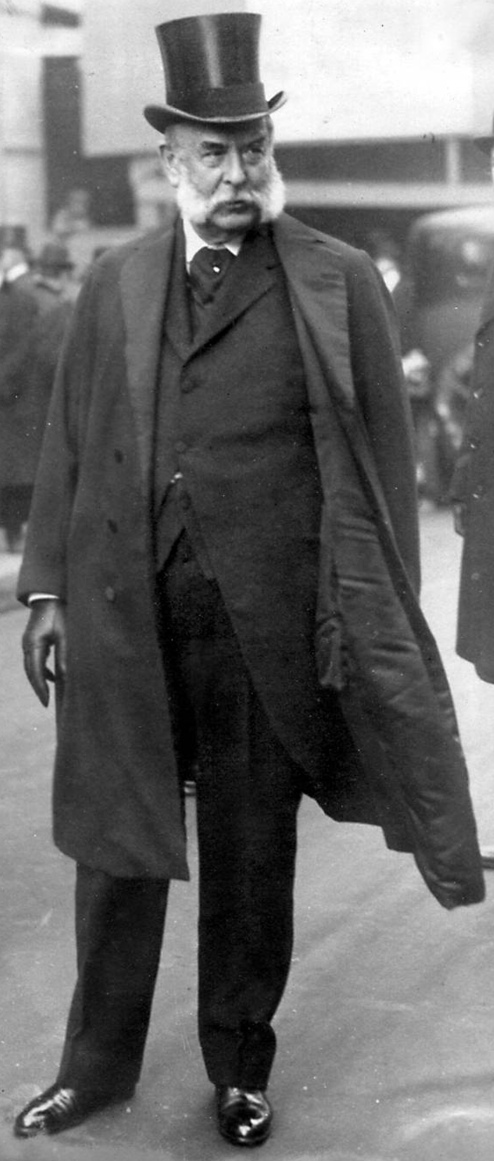
John Pierpont Morgan, 1867-1943.
Coincidentally, the Ringling Brothers Circus was in Washington during the dates of Morgan’s testimony. Capitalizing on this peculiar opportunity, the circus’ press agent arranged for one of its performers, a 27-inch-tall midget named Lya Graf, to be present at the public hearings. When Graf was awkwardly introduced to Morgan, she hopped onto his lap and sat like a child. This allowed for a most interesting photograph to be taken. Depicting a physically deformed sideshow performer sitting on the lap of a man who epitomized wealth and corporate greed, this image captures in a whimsical yet biting way the disparities between the rich and the poor in the United States during the height of corporate capitalism in the early 20th Century. Simultaneously silly and grotesque, the contrast between Graf and Morgan visually expresses the vast inequalities that defined the economic state of America in 1933. It was an image that spoke volumes.
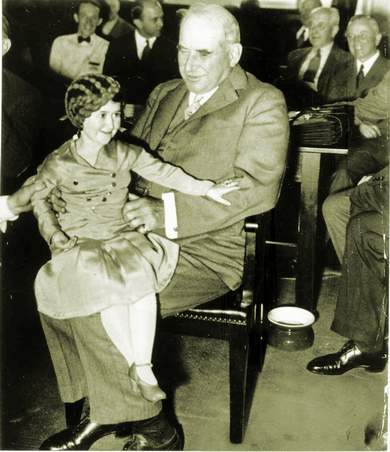
The contrast between Morgan and Graf, most strikingly that of their sizes and implicit power, acted as a real life political cartoon, simultaneously explaining and satirizing the inequalities that defined Depression Era America. The popularity of this photo improved Morgan’s public image and turned Graf into a media darling, if only briefly.
This image resonates particularly well in modern day America, in which class division and unchecked corporate accumulation is reminiscent of the Depression Era. Imagine how poignant a photograph of Warren Buffet cradling an illegal Mexican laborer would seem in light of the current social and economic climate.
Some Further Reading:
An excerpt from a book on the Morgan family that discusses this incident
An article focusing on Graf and her role in this photograph
A succinct introduction to Roosevelt, the Depression, and the New Deal
Oliver, the Humanzee

In 1960, in the African nation of Zaire (now the Democratic Republic of Congo), a peculiar discovery was made. It was a young male chimpanzee with a strikingly humanoid face and the propensity for bipedal locomotion (a trait previously unobserved amongst chimpanzees). This bizarre animal found its way into the care of American animal trainers Frank and Janet Berger who dubbed their new pet Oliver.

Oliver exhibiting his characteristic upright stance. He was rarely seen walking on his knuckles.
Oliver showed a strong desire to adapt as many human affects as possible, including smoking cigars, shunning the company of other chimpanzees, and even making sexual overtures toward Janet. When put on display in the public eye, Oliver became a media sensation, and was widely believed to be some sort of missing link or human-chimpanzee hybrid. Genetic testing did in fact reveal that Oliver possessed forty-eight chromosomes, one more than is common in chimpanzees, and one less than is common in humans. In lieu of any further discussion of Oliver, I have included below the complete documentary produced by the Discovery Channel in 2006 exploring this strange creature and his unique story.
Thursday, the Day of Thor
Irrational Geographic is so often concerned with notions ancient and arcane that, in this novel entry, I’ve decided to take an opposite approach. Today is Thursday, the 6th of August. So as to remain as temporally present and as commonplace as possible, I have decided to make an inquiry into Thursday itself. One seventh of our shared existence is spent inside of this designated period of time, so its origins, both as an entity and as a word, are of undeniable interest.
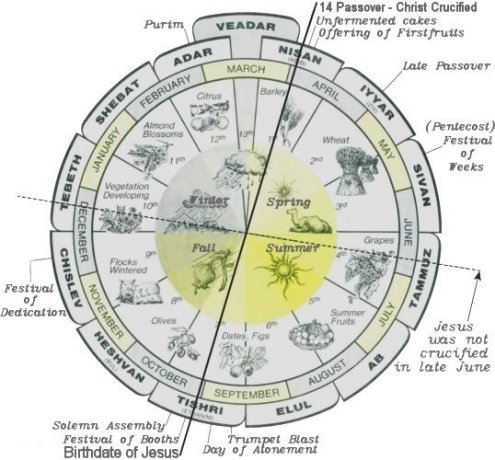
An artistic representation of the months and seasons of the modern Gregorian calendar, here juxtaposed with the ancient Hebrew calendar.
Thursday is designated the fifth day of the week according to the Gregorian calendar, which is currently the Western standard for the temporal demarcation of the year (There are, of course, other calendrical systems currently in use, including the Jewish and Hindu calendars, and that of the Nigerian Igbo with their curious four-day week). This is only the case due to the fact that Sunday is widely designated as the week’s first day, an honor bestowed upon the day, named after the year-defining sun (from the Old English word Sunnendaeg, “Day of the sun”), by Judeo-Christian calendrical tradition. Some nations including The United Kingdom, on the other hand, still consider Sunday to be the week’s seventh day, making Thursday the fourth. The Chinese word for Thursday, in fact, means fourth. The ancient Greeks and Romans would have taken issue with this, however, each designating their equivalent of Sunday as the week’s first day, associating it with supreme divinity.
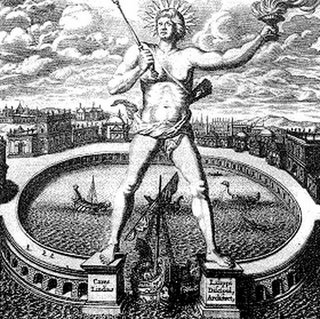
The legendary Colossus of Rhodes, one of the Seven Wonders of the Ancient World, depicted Helios, the Greek sun god, for whom the first day of the week was named.
Despite the fact that Thursday sits on the opposite side of the week from Sunday, its namesake is certainly a source of great historical power and significance. Its moniker originates in a culture very different than that of Sunday. Thursday takes its name from Thor, simultaneously the ancient Norse god of thunder and Germanic god of protection.
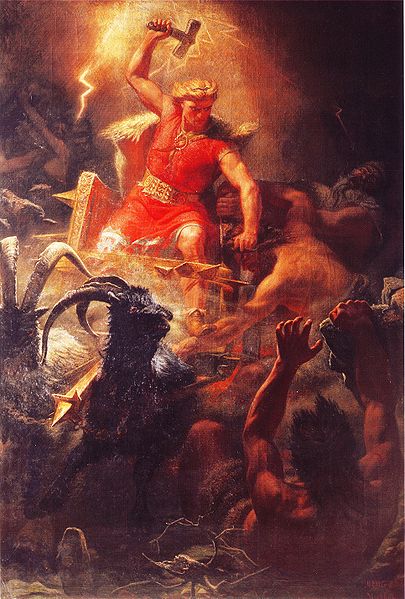
”Thor’s Battle Against the Giants” by Swedish painter Marten Eskil Winge, 1872.
One of the oldest recorded deities of Scandinavian polytheistic culture, Thor (also referred to as Donor in some Germanic linguistic traditions) served as a symbol of Pagan resistance and cultural pride in the face of the monotheistic Christian encroachment upon Scandenavia beginning in the 8th century. Perhaps the fact that remnants of Thor grace our modern calendars (Thursday having taken the place of Dies Iovis, the ancient Latin “Day of Jupiter”) suggests that this resistance was never fully quelled despite the fact that, by the 12th century, Christianity had all but beaten Paganism out of the region.
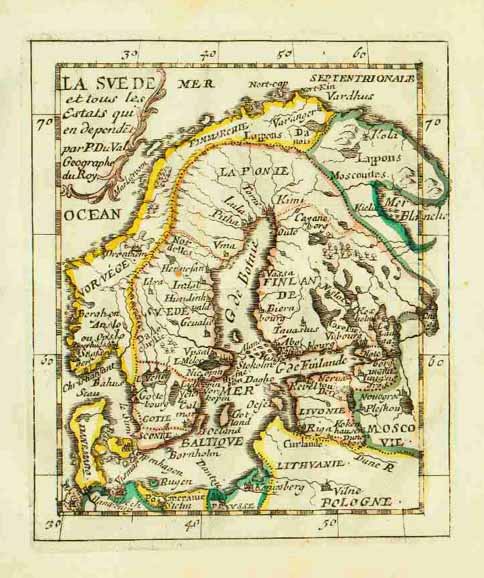
A Medieval map of Scandinavia.
Like the evergreen tree decorated with candles and ribbons displayed during the Christmas celebration, the prominent inclusion of Thor’s name in a predominantly Judeo-Christian calendar is an instance of the hybridization of Pagan and monotheistic traditions that has survived into modern times. While the Christian crusaders of the Middle Ages may have aimed to bend the world to their will, they themselves received some cultural battle scars that are still visible today. Our word for Thursday is just such a scar, scratched approximately fifty two times across the face of every modern Western calendar.
Some Further Reading:
A look at the Igbo calendar as it relates to the notion of a spiritual cosmic order
A simple breakdown of the Hindu calendar
A tool that allows for the conversion of dates between the Gregorian and Jewish calendars
An essay that discusses the origins of the Christmas tree and its Pagan connections
A Wikipedia entry including some excellent charts comparing day nomenclature cross-culturally
Phobos Update: Buzz Aldrin Mentions a Monolith on Mars’ Moon
An Irrational Geographic entry from the 21st of May discussed Phobos, the tiny moon of Mars that, by its very appearance, acts as one of the most ghostly objects in our solar system. I recently came across this footage of astronaut Buzz Aldrin, who was part of the Apollo 11 moon landing mission, mentioning a monolith on Phobos. While he does not discuss the issue in depth, I found it fascinating nonetheless. Here is the clip in question:
Some Further Reading:
NASA’s entry on the Earth’s moon
A site that explores the possibility of a monolith on Phobos
Weasel Coffee
Known as Kopi Luwak throughout much of Southeast Asia and popularly translated to English as weasel or civet coffee, this gourmet beverage is brewed from beans that have been eaten and defecated by the Asian palm civet.
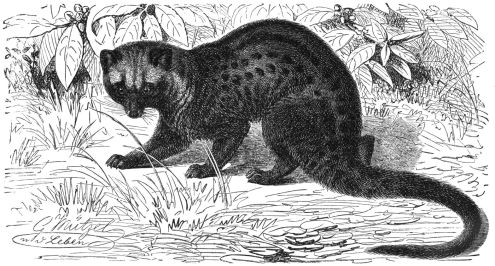
The Asiam palm civet is not a member of the weasel family, but is commonly referred to by the Vietnamese word meaning weasel.
Palm civets have a taste for the ripe fruit of the coffee plant, known as coffee cherries. While the flesh of the fruit is broken down by the civets’ digestive tracts, the beans contained within the berries pass through the animals intact.

Clumps of coffee beans that have passed through civets.
The civets’ contribution to the palatability of the resulting beans is twofold. Since these animals are drawn to the ripest and most healthy coffee berries, their excrement is filled with the choicest beans. Secondly, the unique combination of digestive enzymes that the coffee beans are exposed to inside the civets reduces their natural bitterness. Washed thoroughly and then brewed as a light roast, these beans are said to produce some of the most delicious coffee in the world. The flavor is widely described as “sweet and smooth”.

Due to the scarcity and desirability of the beans, Kopi Luwak is often sold for several hundreds of dollars a pound, making it the world’s most expensive coffee.
Connoisseurs point out that, in addition to possessing a notably reduced bitterness, Kopi Luwak displays a complex bouquet of flavors not found in any other type of coffee. This is caused by the civets’ digestive enzymes penetrating the coffee beans and interacting with certain proteins contained within. The resulting palatability is a serendipitous side effect.
The use of animals to identify, gather, or alter morsels of food that are subsequently considered gourmet is seen in several other modern practices. Pigs used to locate truffles, hounds that aid bird hunters, and bees that convert flower nectar into honey all play an important role in human culinary tradition. But none aside from Asian palm civets can brag that gastronomes pay hundreds of dollars for sacks of their scrumptious shit.
Some Further Reading:
An article about the coffee from a Vietnam travel guide
An online shop selling weasel coffee beans, for those curious enough to try it for themselves
An article about an Australian café that serves Kopi Luwak for $50 a cup

